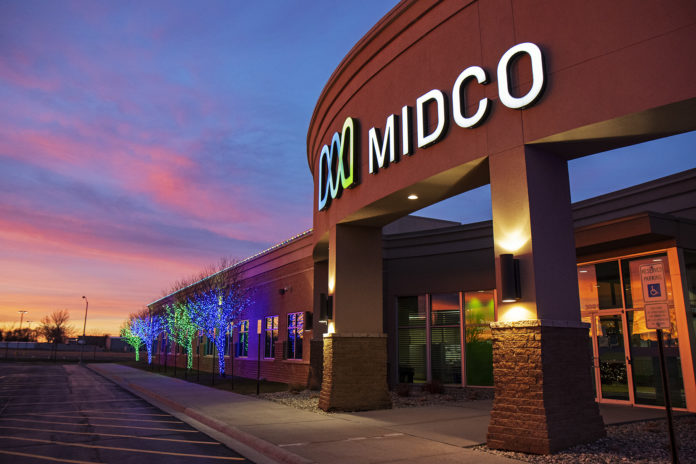Sioux Falls, South Dakota-based Midco is a regional service provider that serves about 400,000 customers in five states. The company is a joint venture of Comcast and Midcontinent Media and provides cable, internet (including gigabit speeds) and telephone services in the Dakotas, Minnesota and parts of Kansas and Wisconsin. Midco participated in the recent $9.2 billion Rural Digital Opportunities Fund (RDOF) reverse auction, winning several million dollars in RDOF awards to build out service within its area. RDOF is just one of a number of federal funding programs that are focused on supporting higher-speed, better-performing internet connectivity for rural America. The American Rescue Plan, signed into law by President Joe Biden in March, is a $3.2 trillion relief package that included about $7 billion for various broadband-related programs. The Biden administration has also proposed up to as much as $100 billion in order to extend broadband connectivity to the entire country and close the digital divide.
RCR Wireless News spoke with Midco’s Chief Technology Innovation Officer Jon Pederson about the operator’s network strategy and how it is navigating the federal and state funding environment and approaching technology decisions. While Midco does utilize both wireless and wired network (and received Connect America Fund support to build out wireless specifically in some underserved areas), “All new builds for us are now fiber, unless it’s extremely remote,” says Pederson.

As Midco considers potential areas of build-out and where to pursue funding opportunities, “We are only doing things that are adjacent to our existing fiber network. We’re not going to pick an island off in some state where we’re not. That’s been a strategy for us, and it helps us leverage the connectivity we already have,” Pederson says. “We like to use the term ‘edging out,’” he continues. “We edge out our network, and we don’t have to reinvent the wheel. And that’s important. It helps in two ways: To make sure the quality of service you’re providing is good and established, and then the other one is it makes it much more efficient. You’re not having to build super long-haul links or to lease circuits to extend service in that area.”
When it comes to balancing the business case for build-outs, technology choices and local geographic challenges, Pederson said, “I think the key is just a real honest strategic look.”
He points to an example for Midco: The company had a fiber ring in Minnesota that was working well, but two smaller rings would be better for latency and resiliency. So when the company looked at its opportunities for support in mid-Minnesota, Pederson says, “there were certain unserved areas that were more attractive, because by connecting the dots, we were able to split that ring into two smaller, higher-performance rings. It was very strategic: It accomplished providing service to unserved areas while benefitting our entire network. We try to take a very thoughtful look at all the opportunities and pick the ones that accomplish the greatest good.”
So how does Midco survey all those opportunities? “We’ve actually formed a group just to analyze and reconnoiter all of those gifts, so we can figure out what’s best for us,” Pederson says. That is part of how Midco tries to ensure efficiency in its pursuit of programs and TCO, he says. Is a given program a federal one and if so, through which agency? If it’s a state program, which of the five states Midco operates in? Is the funding a special program related to Covid-19, with specific bounds on use or timeframe in which to spend the money? It’s a lot to keep track of, and the reason that Midco formed its specific team for that purpose. “If you’re not up to that task, it could be a little confusing and you might miss opportunities,” he says.
Pederson says that while Midco is “very interested” in 5G as it applies to the midband – specifically, to CBRS, which the company has already tested in a 4G context. He’s much more measured about millimeter-wave-based 5G, saying, “We don’t see that as a tool that we’re going to use in the near future.” But midband 5G use is on Midco’s eventual technology roadmap, albeit “years into the future.”
On the influx of broadband funding, Pederson says that “It feels a little bit like a free for all, and that’s not what it is, and it’s not how it should be approached. It should be seen as an enabler, all of these funds. And that means, maybe even more than ever, that you should be wise about it and build off what you always have and not scale beyond your means. I think that’s important, and a certain conscientiousness needs be involved in leveraging these funds to properly bring broadband to rural areas.
“There’s more to providing broadband service than just running a fiber through the ground or putting up a tower,” Pederson adds. “There’s a lot of backend systems, so I think it’s important that there’s a certain established organization behind the effort,” he says. “It’s important to also map [pursuit of subsidies] to the capabilities of your business. I could see somebody overreaching, and you don’t want to do that. … There’s dollars available. Do you have the team, do you have the resources to take advantage and to bring great service to rural America?”
Interested in hearing more about deploying future-ready rural broadband networks? Join RCR Wireless News for a webinar on Thursday, June 10 featuring regional network operator Nsight, the Competitive Carriers Association and A10 Networks, and keep an eye out for our upcoming special report, to be published the same day.

